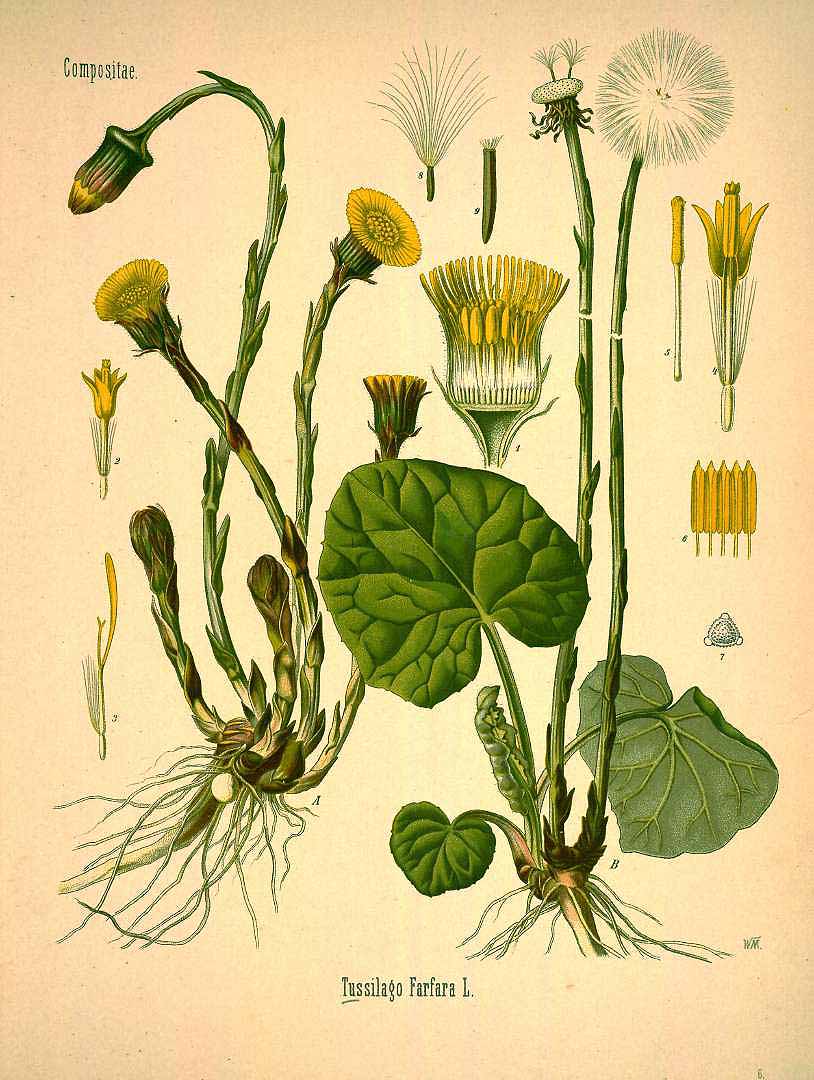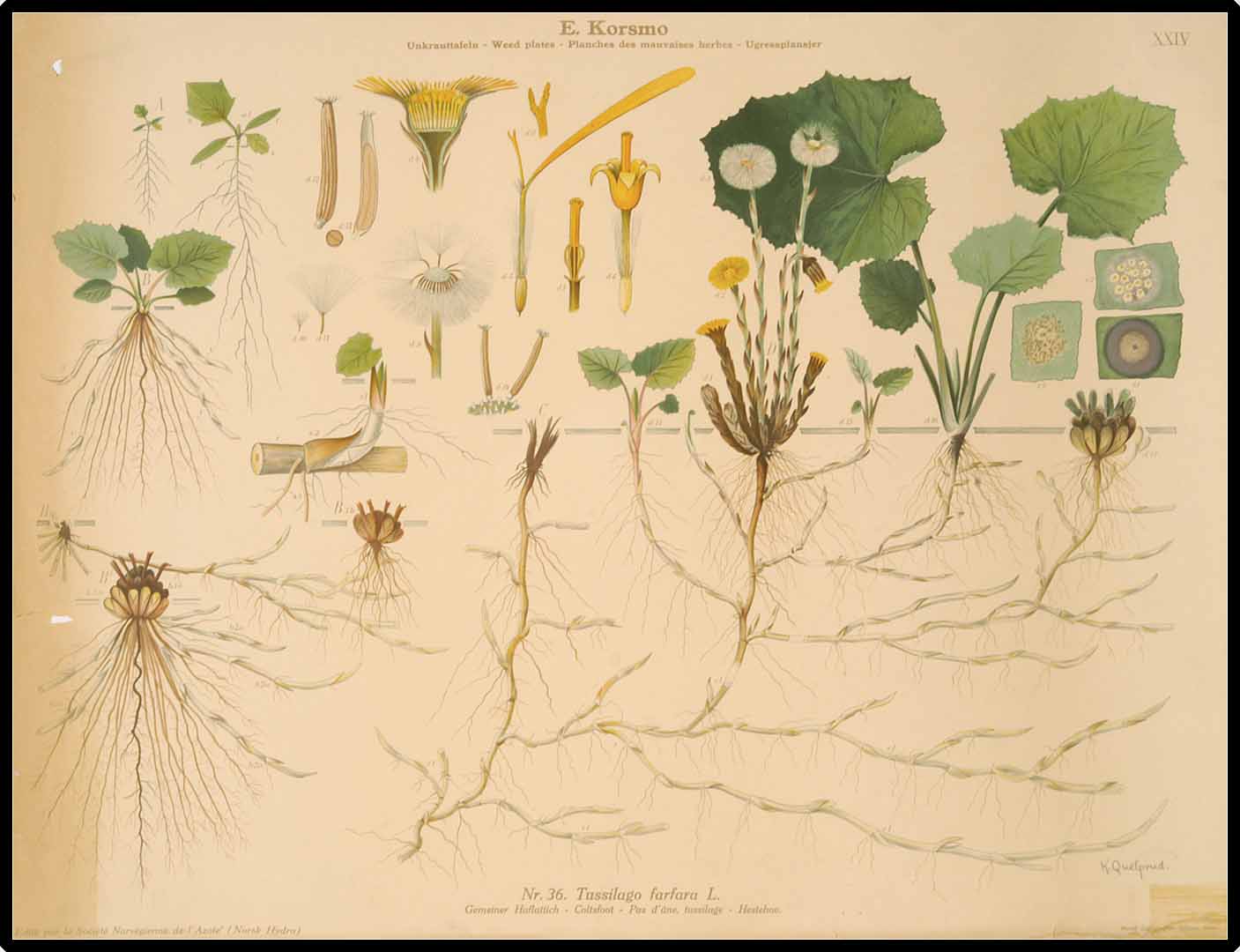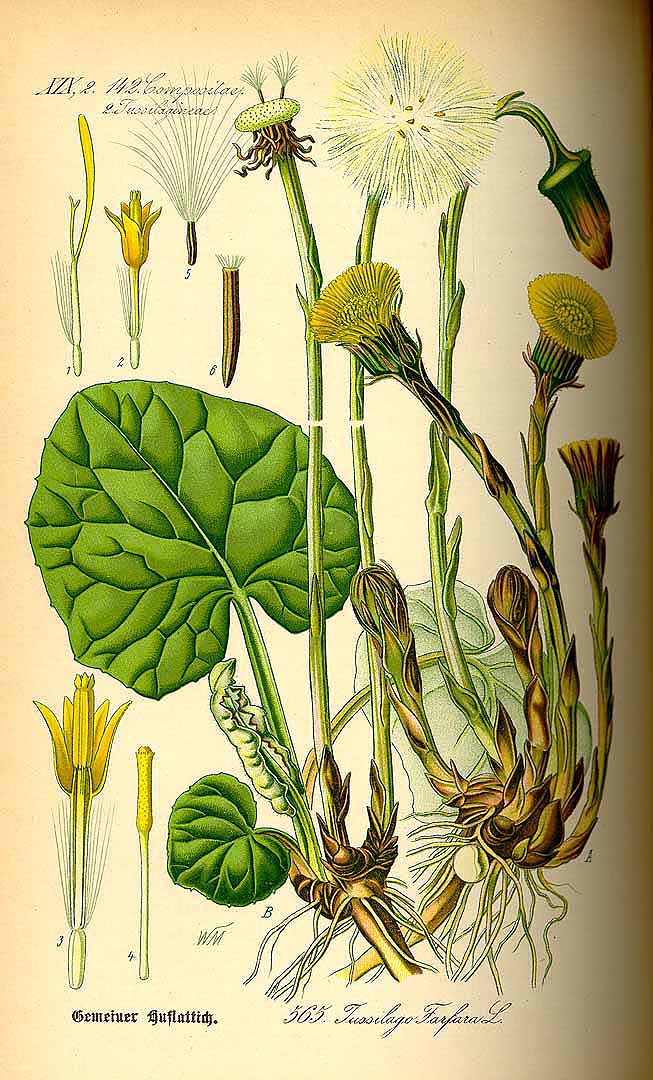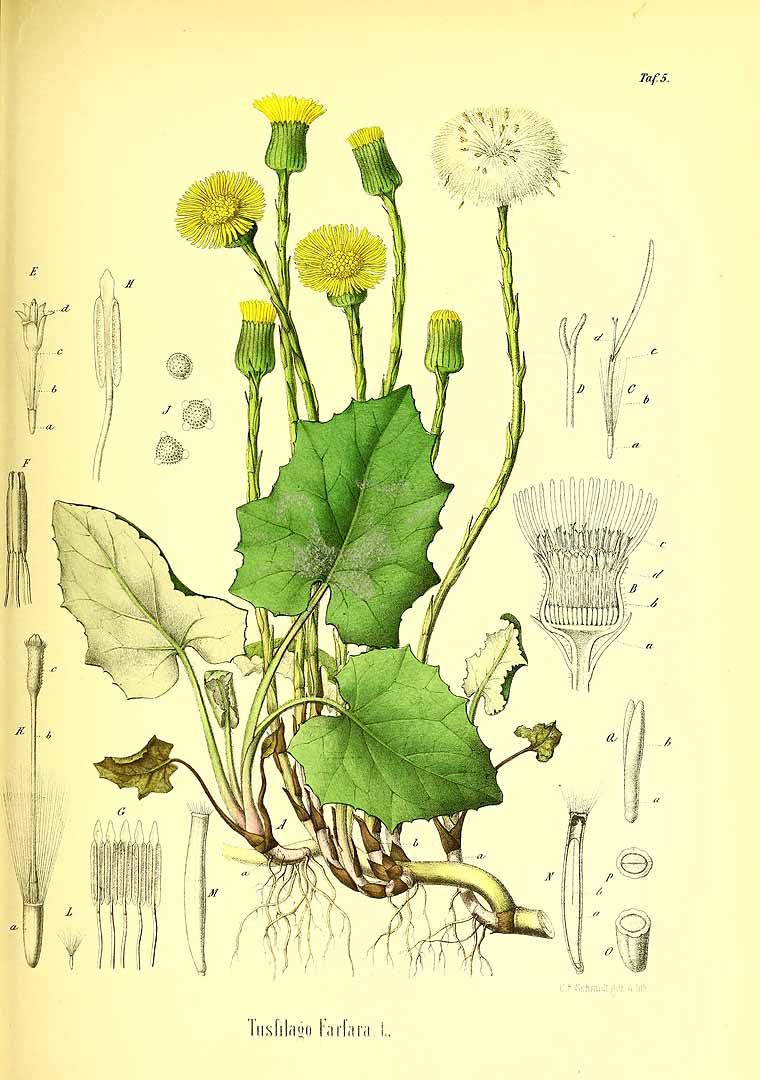! Nouveau site ici !
Vita > Plantae > Magnoliophyta > Magnoliopsida > Asterales >
Asteraceae > Tussilago
Tussilago farfara
(Tussilage)



 | *** - ***
| *** - ***
Vita > Plantae > Magnoliophyta > Magnoliopsida > Asterales >
Asteraceae > Tussilago
Tussilago farfara
(Tussilage)

Une petite plante qui ne cesse de croître d'année en année. Il atteint 30 cm de haut et 20 cm de large. La tige est dressée et duveteuse. Il est blanc avec des écailles violettes. Les feuilles apparaissent... (traduction automatique)
→suite
⬀
Le  donne accès au menu
donne accès au menu (c'est votre point de repère) 😊 ;
En dessous vous avez la classification, à partir de la vie (Vita, premier rang) jusqu'à la classe au dessus de la plante, dont vous trouvez ensuite le nom scientifique/botanique (latin) puis le nom commun (français), le cas échéant ;
C'est aussi un lien vers la fiche complète (tout comme la ✖, en bas à droite, et le +, en dessous de la description) ;
Vient alors l'illustration (ou ce qui la remplace, en attendant), la comestibilité :
Et en bas
⬂









